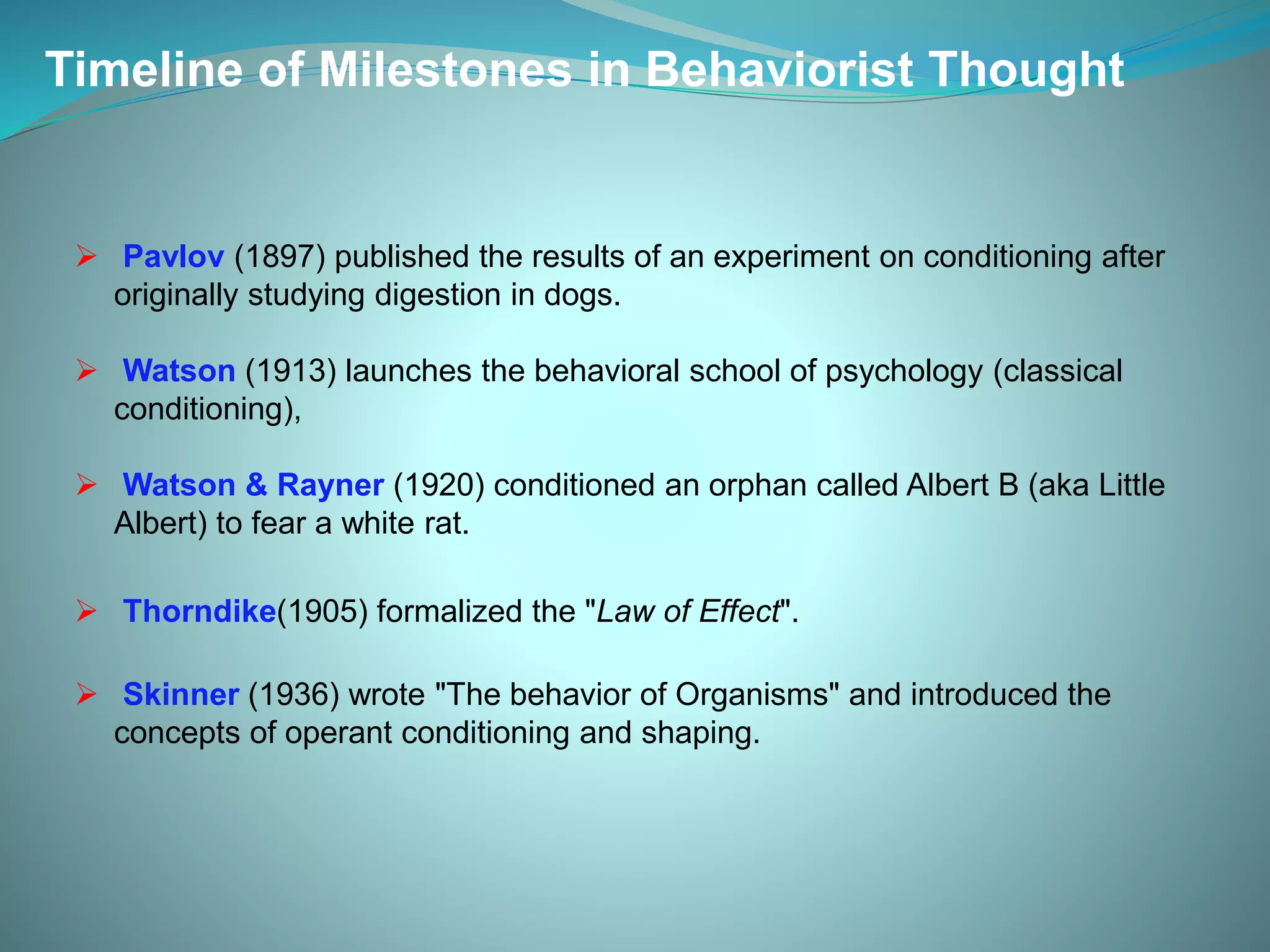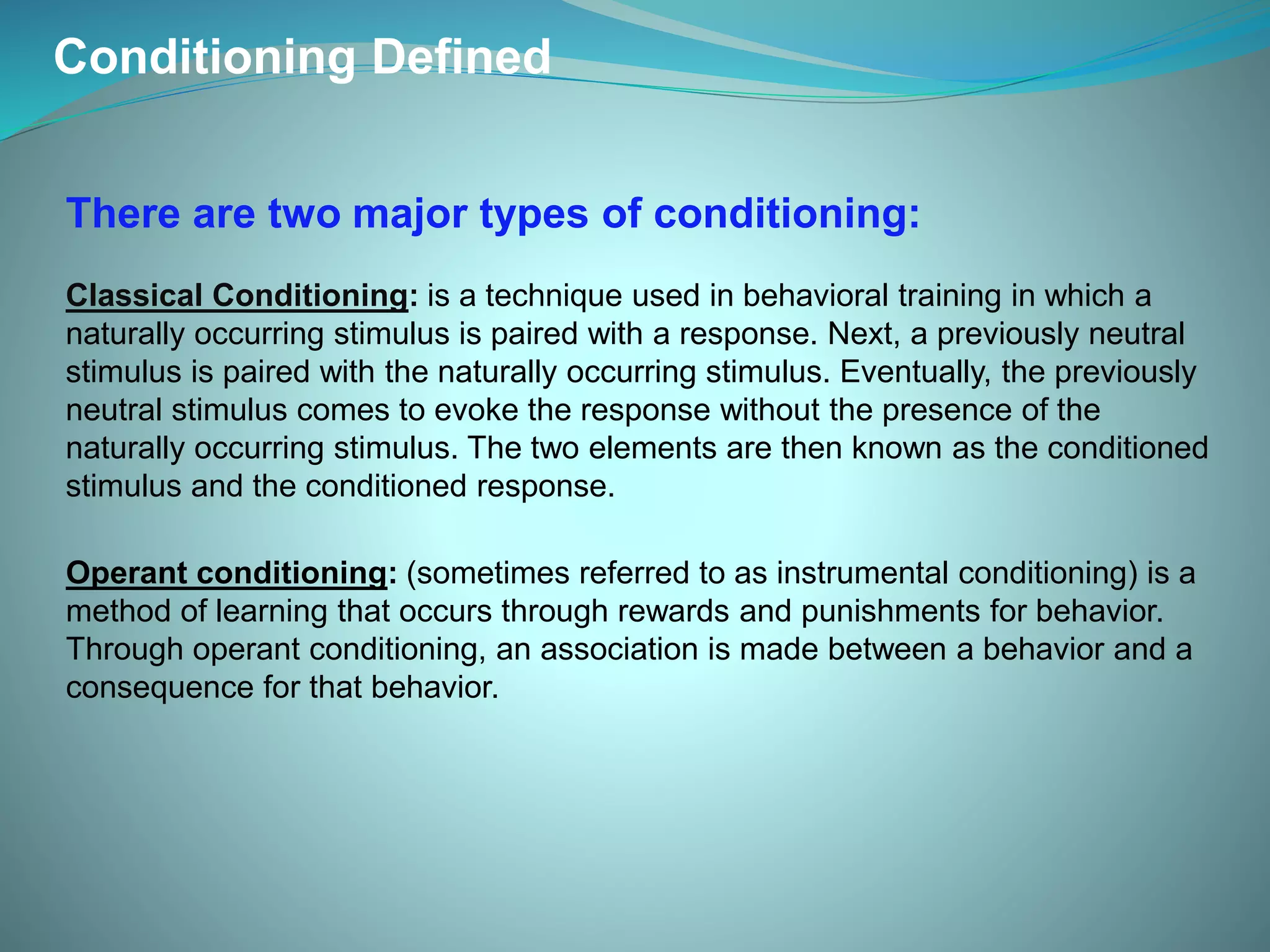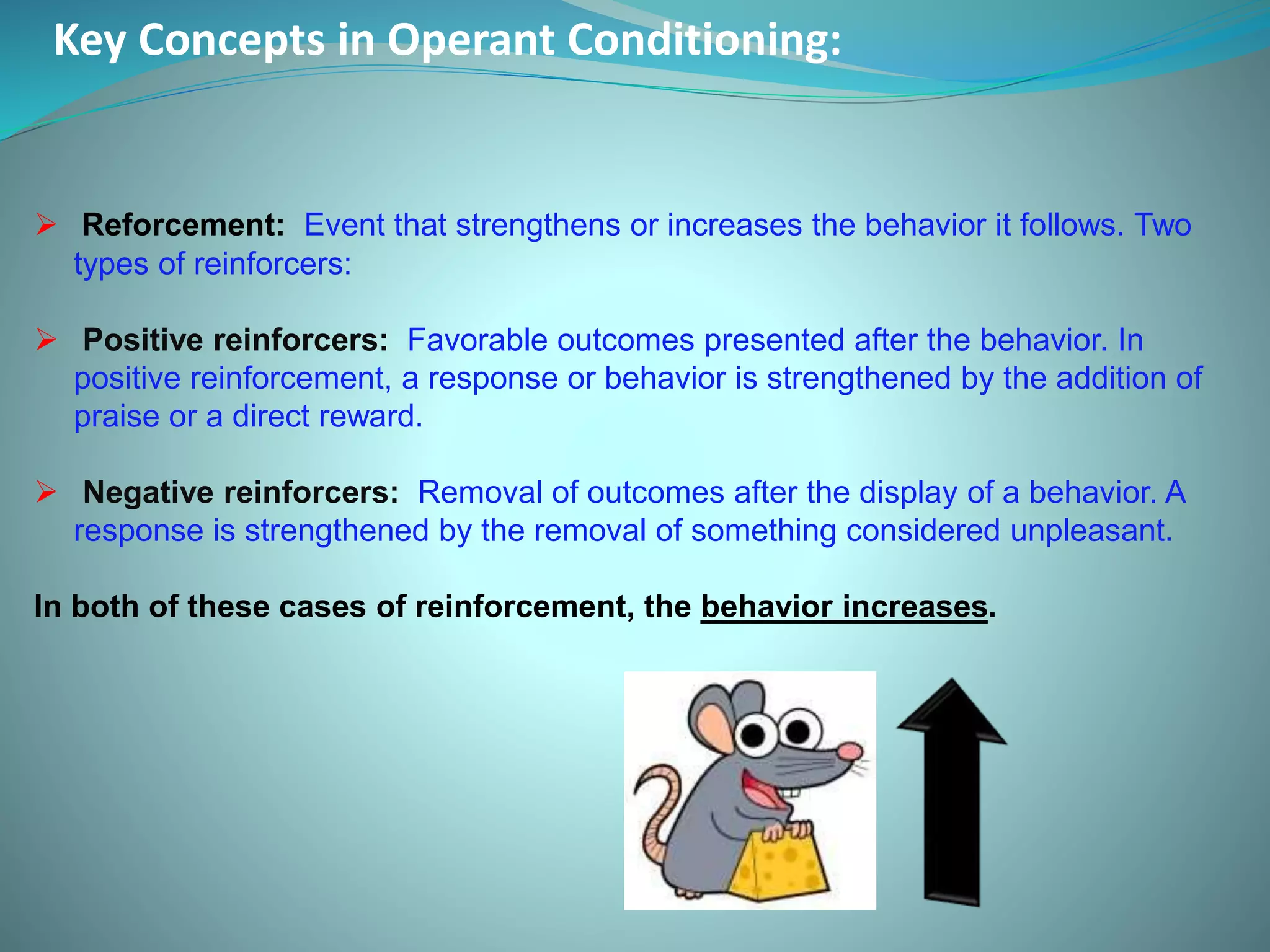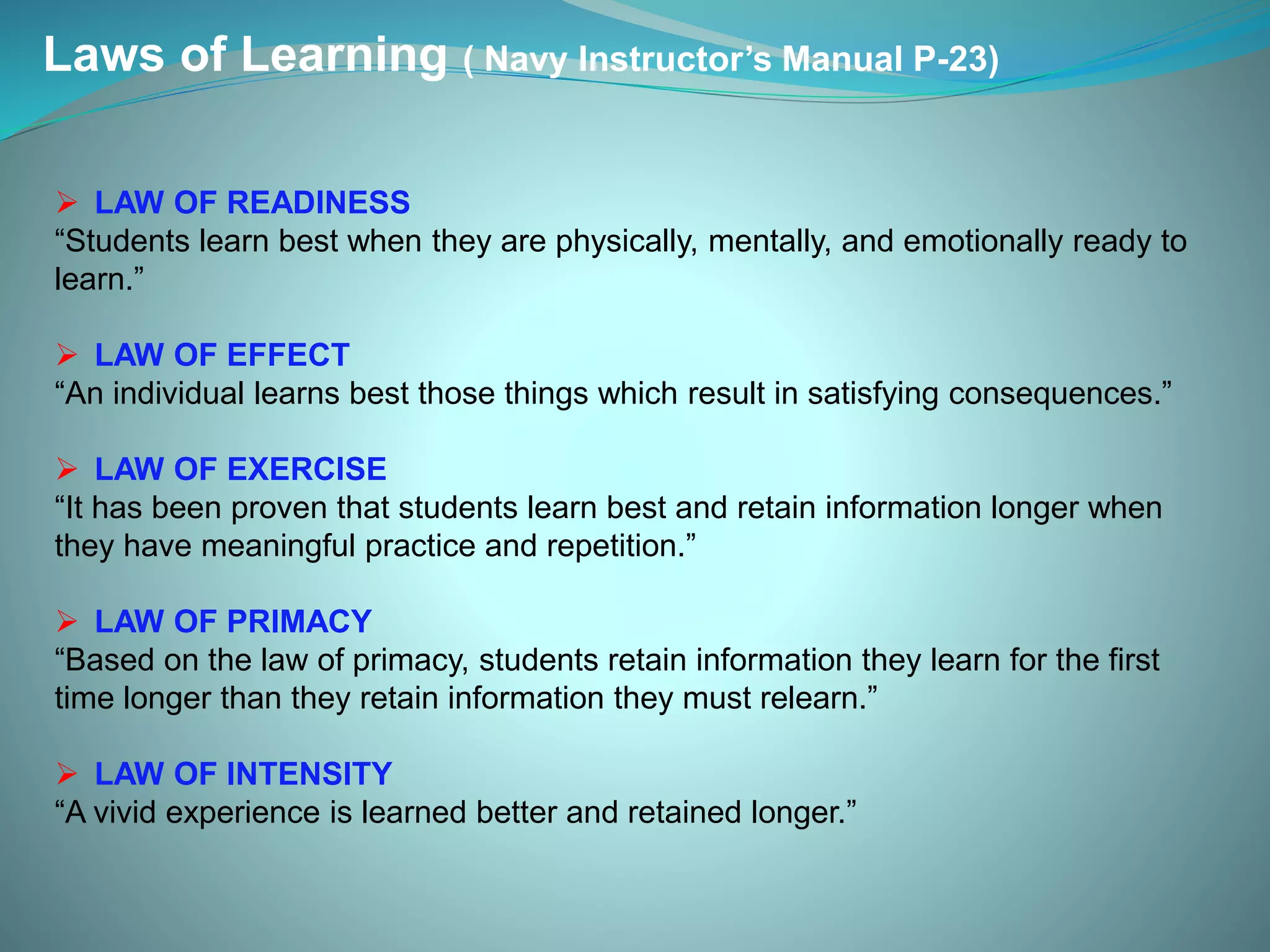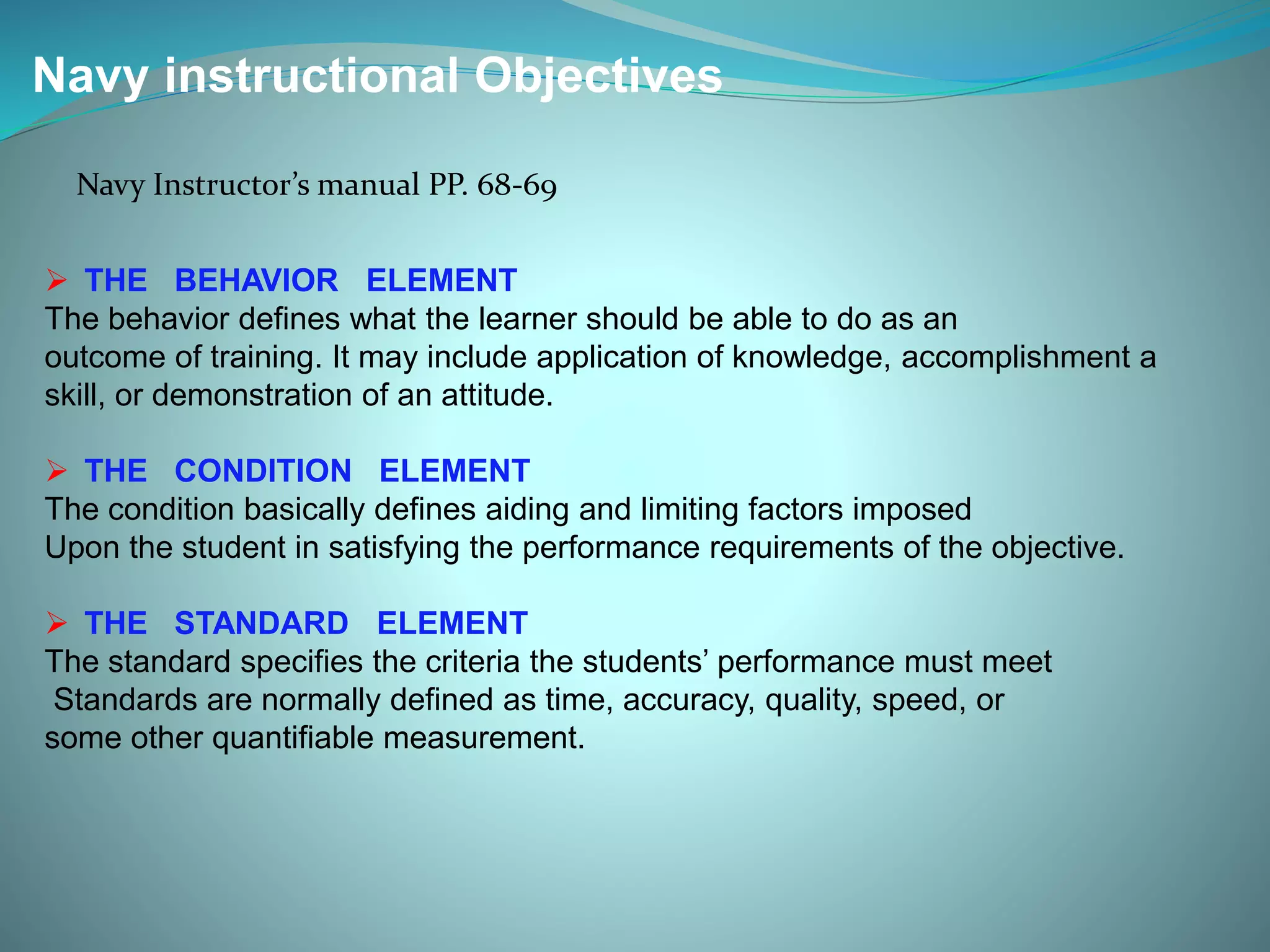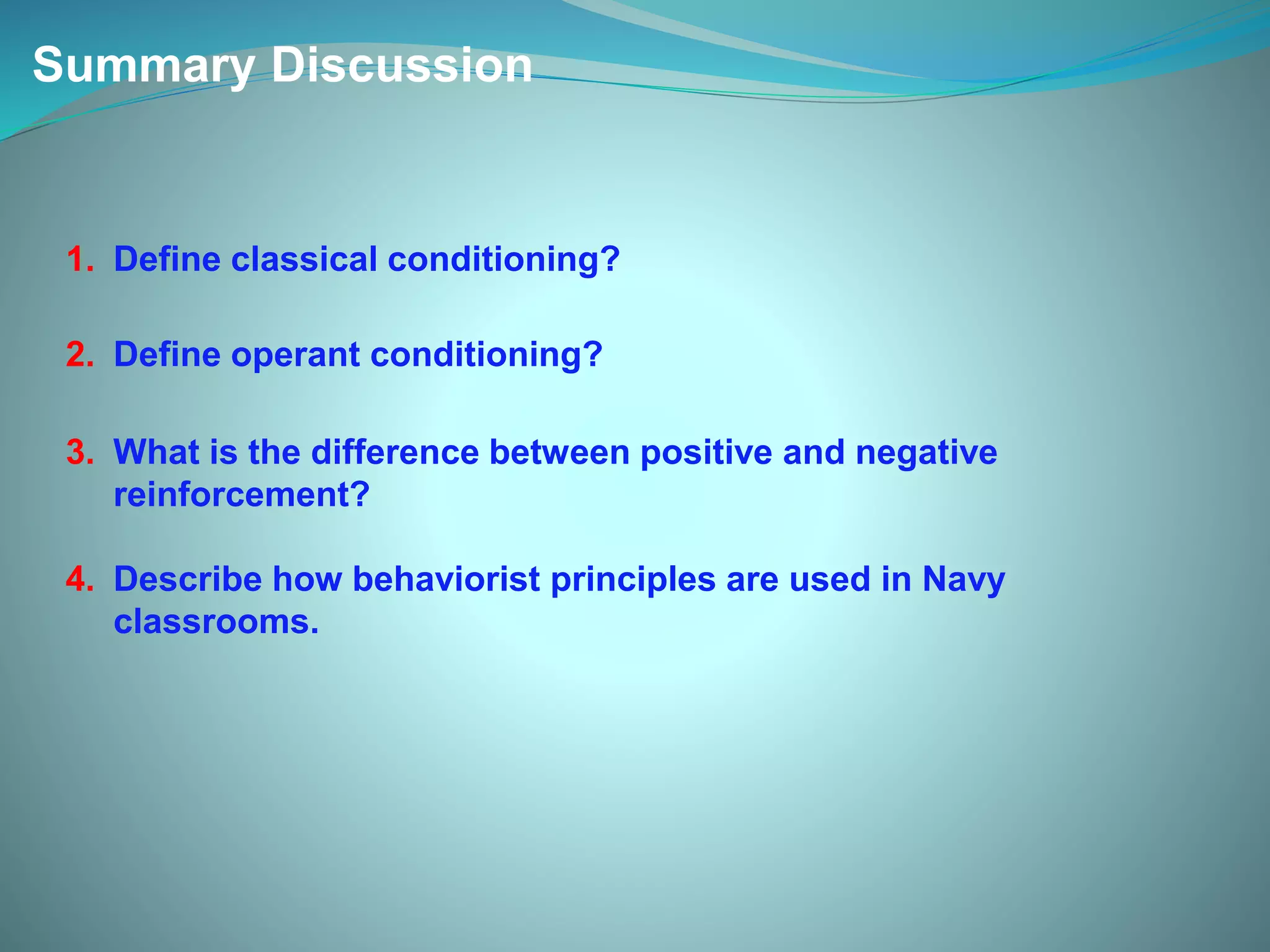Here are the key points from the discussion:
1. Classical conditioning is a learning process where a naturally occurring stimulus is paired with a response, and then a previously neutral stimulus is paired with the original stimulus until the neutral stimulus elicits the response on its own.
2. Operant conditioning is a method of learning through rewards and punishments for behaviors. Associations are made between behaviors and consequences.
3. Positive reinforcement increases a behavior by adding a rewarding stimulus, while negative reinforcement increases a behavior by removing an unpleasant stimulus.
4. Behaviorist principles are used in Navy classrooms through techniques like shaping behaviors with reinforcement, using objectives to define expected behaviors, and structuring lessons based on principles like readiness, exercise,



